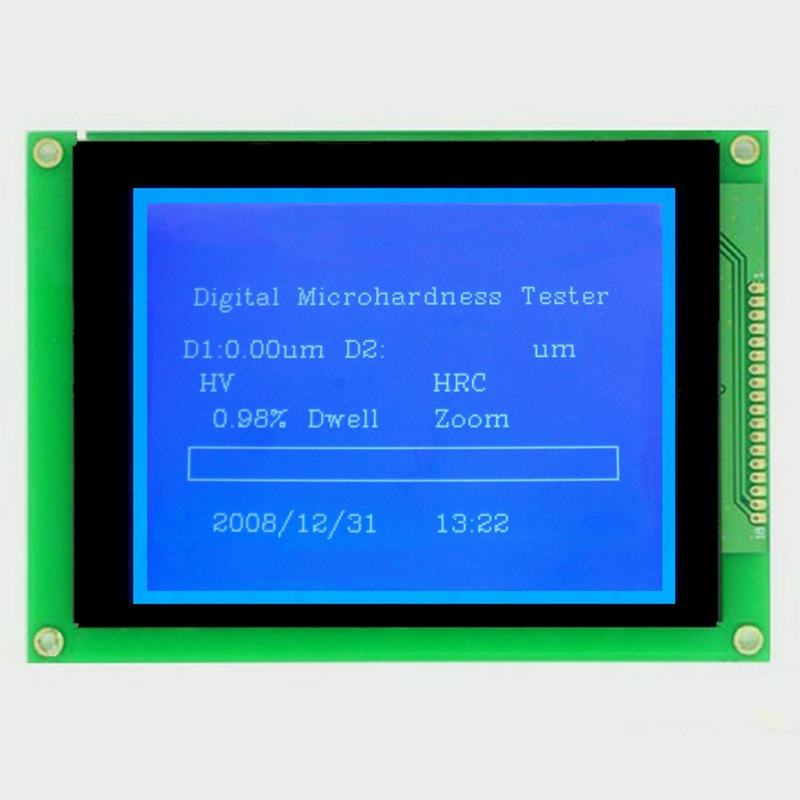Graphic LCD Module: Enhancing Display Capabilities for Visual Applications
Graphic LCD modules are widely used in industries such as automotive, medical devices, consumer electronics, and industrial automation. In this article, we will explore the features and benefits of graphic LCD modules and understand their significance in visual applications.
High Resolution and Clarity
One of the primary advantages of graphic LCD modules is their high resolution and clarity. These modules can display detailed graphics and images with precision, allowing for a superior visual experience. With a higher pixel density, graphic LCD modules can present intricate details and sharp lines, making them suitable for applications that require accurate representation of visual information.
Versatile Graphic Display
Graphic LCD modules provide the flexibility to display a wide range of graphical elements, including icons, symbols, and custom graphics. This versatility allows designers and developers to create visually appealing user interfaces and informative displays. Whether it's designing interactive menus, presenting data charts, or showing dynamic animations, graphic LCD modules offer the flexibility to cater to diverse application requirements.
Wide Viewing Angle
Another significant benefit of graphic LCD modules is their wide viewing angle. These modules utilize advanced LCD technologies that ensure consistent image quality and readability from various viewing positions. Whether the display is viewed from the front, sides, or even at an angle, the content remains visible and legible. This feature is particularly advantageous in applications where multiple users or observers need to view the display simultaneously.
Monochrome and Color Options
Graphic LCD modules are available in both monochrome and color variants, catering to different application needs. Monochrome modules are suitable for applications that require simple visual representation or have power-saving requirements. On the other hand, color modules offer vibrant and engaging displays, making them ideal for applications where color coding, highlighting, or differentiation is crucial. The availability of monochrome and color options allows designers to select the most suitable module based on their specific requirements.
Low Power Consumption
Efficient power management is a critical consideration in many applications, especially portable devices and battery-powered systems. Graphic LCD modules are designed to minimize power consumption without compromising display quality. They incorporate technologies such as backlight control, power-saving modes, and low-power drivers, ensuring optimal power efficiency. By utilizing graphic LCD modules, developers can achieve a balance between visual impact and power consumption, thereby extending the battery life of the devices.
Easy Integration and Interface
Graphic LCD modules are designed for easy integration into different systems and platforms. They typically feature standard interfaces such as parallel or serial communication protocols, making them compatible with a wide range of microcontrollers and development boards. Additionally, these modules come with well-documented application programming interfaces (APIs) and software libraries, simplifying the integration process for developers. This ease of integration enables faster development cycles and reduces time-to-market for products that rely on graphic displays.

Frequently Asked Questions (FAQs)
Q: What is the difference between a graphic LCD module and a character LCD module?
A: The primary difference between a graphic LCD module and a character LCD module lies in their display capabilities. While a character LCD module can only display pre-defined alphanumeric characters, a graphic LCD module can display custom graphics, icons, and symbols, in addition to alphanumeric characters.
Q: Can graphic LCD modules be used in outdoor applications?
A: Yes, graphic LCD modules can be used in outdoor applications. However, it is essential to consider the module's specifications, such as brightness, contrast ratio, and sunlight readability, to ensure optimal visibility under different lighting conditions.
Q: Can graphic LCD modules be used in touch screen applications?
A: Yes, graphic LCD modules can be combined with touch screen overlays to create touch-enabled displays. This combination allows users to interact with the graphical interface through touch gestures, enhancing the user experience.
Q: What is the typical lifespan of a graphic LCD module?
A: The lifespan of a graphic LCD module depends on various factors such as usage conditions, operating temperatures, and overall product design. However, with proper usage and maintenance, graphic LCD modules can typically last for several years.
Q: Are graphic LCD modules suitable for industrial environments?
A: Yes, graphic LCD modules are designed to withstand harsh industrial environments. They are built with robust materials and incorporate features such as wide temperature range operation, vibration resistance, and dust protection, making them suitable for industrial applications.
Q: Can graphic LCD modules be customized for specific applications?
A: Yes, graphic LCD modules can be customized to meet specific application requirements. Customization options include display size, resolution, touch screen integration, backlight configuration, and mounting options.
Conclusion
Graphic LCD modules offer significant advantages in terms of high resolution, versatile graphic display, wide viewing angle, color options, low power consumption, and easy integration. These modules provide a reliable and visually engaging solution for applications across various industries. With their ability to display intricate graphics, icons, and alphanumeric characters, graphic LCD modules enable the development of user-friendly interfaces and informative displays. By utilizing graphic LCD modules, designers and developers can enhance the visual experience of their products and create impactful user interfaces.



